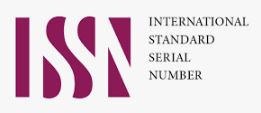IMPLEMENTASI KAWASAN ZERO SUSU FORMULA DENGAN KEDASI ( KEDAI SUPPORT ASI ) DI KELURAHAN WONOKROMO SURABAYA
DOI:
https://doi.org/10.30996/jpm17.v5i01.3241Abstract
Sampai saat ini, di Indonesia angka kematian bayi masih terbilang tinggi yaitu sebesar 22.23 per kelahiran hidup. Angka ini belum mencapai angka target SDG’s 2030 yaitu sebesar 12 per 1000 kelahiran hidup Ketidakberhasilan pemberian ASI eksklusif dan praktik menyusui sampai anak usia 2 tahun disebabkan beberapa faktor antara lain minimnya dukungan keluarga, masyarakat, stress ibu dan persepsi yang salah tentang ASI. Studi pendahuluan yang dilakukan pada bulan Maret 2018 di Kelurahan Wonokromo didapatkan capaian ASI eksklusif sebesar 49%. Angka ini belum mencapai target yang ditentukan dinas kesehatan yaitu sebesar 80%. Tujuan pengabdian ini adalah dibentuknya KEDASI ( Kedai Support ASI ) yang akan mempromosikan ASI eksklusif sekaligus sebagai bentuk usaha kecil masyarakat. Metode menggunakan sosialisai KEDASI, pelatihan, pendampingan, pre test dan post test bagi sasaran langsung yaitu ibu hamil trimester 3, ibu yang memiliki balita usia 0- 24 bulan, pengasuh anak, kader balita dan pendamping ASI berjumlah 80. Hasil capaian berupa peningkatan mean pre dan post test yaitu pengetahuan , keterampilan sebesar 18.7 point, persepsi 20.2 point, budaya 17.6 point, perilaku promotif 14 point, pendapatan 21.1 point. KEDASI merupakan pendekatan upaya promosi kesehatan berbasis wirausaha masyarakat
Kata kunci: ASI eksklusif, KEDASI
Downloads
References
Nickerson, L. E., Sykes, A. C., & Fung, T. T. (2012). Mothers ’ experience of fathers ’ support for breast-feeding. Public Health Nutrition: 15(9), 1780–1787, 15(9), 1780–1787. https://doi.org/10.1017/S1368980011003636
Ratnasari, D., Astria, B., Mph, P., Scd, H. H., Yugistyowati, A., Mnurs, N., … Mph, E. N. (2017). Family support and exclusive breastfeeding among Yogyakarta mothers in employment. Asia Pac J Clin Nutr 2017;26(Suppl 1):S31-S35 Original, 26(May). https://doi.org/10.6133/apjcn.062017.s8
Scott, R., & Rossiter, R. (2016). Therapeutic communication and relationships in chronic and complex care. 31(6).
Taherifard, P., Delpisheh, A., Shirali, R., Afkhamzadeh, A., & Veisani, Y. (2013). Socioeconomic , Psychiatric and Materiality Determinants and Risk of Postpartum Depression in Border City of Ilam , Western Iran. Hindawi Publishing Corporation Depression Research and Treatment Volume 2013, Article ID 653471, 7 Pages Http://Dx.Doi.Org/10.1155/2013/653471 Research, 2013.
Tarrant, R. C., Younger, K. M., Sheridan-pereira, M., White, M. J., & Kearney, J. M. (2009). The prevalence and determinants of breast-feeding initiation and duration in a sample of women in Ireland. Public Health Nutrition: 13(6), 760–770, 13(6), 760–770. https://doi.org/10.1017/S1368980009991522
Villar, O. A. E., Montañez-alvarado, P., Gutiérrez-vega, M., Carrillo-saucedo, I. C., Gurrola-peña, G. M., Ruvalcaba-romero, N. A., … Ochoa-alcaraz, S. G. (2017). Factor structure and internal reliability of an exercise health belief model scale in a Mexican population. 1–10. https://doi.org/10.1186/s12889-017-4150-x
Zare, M., & Ghodsbin, F. (2016). O riginal A rticle The Effect of Health Belief Model-Based Education on Knowledge and Prostate Cancer Screening Behaviors : A Randomized Controlled Trial. 4(1), 57–68.
Downloads
Published
Issue
Section
License
COPYRIGHT NOTICE
The copyright in this website and the material on this website (including without limitation the text, computer code, artwork, photographs, images, music, audio material, video material and audio-visual material on this website) is owned by PM17: Jurnal Pengabdian Masyarakat and its licensors.
Copyright license
JPM17: Jurnal Pengabdian Masyarakat grants to you a worldwide non-exclusive royalty-free revocable license to:
- View this website and the material on this website on a computer or mobile device via a web browser;
- Copy and store this website and the material on this website in your web browser cache memory; and
- Print pages from this website for your
- All articles published by PM17: Jurnal Pengabdian Masyarakat are licensed under the creative commons attribution 4.0 international license. This permits anyone to copy, redistribute, remix, transmit and adapt the work provided the original work and source is appropriately cited.
JPM17: Jurnal Pengabdian Masyarakat does not grant you any other rights in relation to this website or the material on this website. In other words, all other rights are reserved.
For the avoidance of doubt, you must not adapt, edit, change, transform, publish, republish, distribute, redistribute, broadcast, rebroadcast or show or play in public this website or the material on this website (in any form or media) without appropriately and conspicuously citing the original work and source or JPM17: Jurnal Pengabdian Masyarakat prior written permission.
Permissions
You may request permission to use the copyright materials on this website by writing to compliance@academicjournals.org.
Enforcement of copyright
JPM17: Jurnal Pengabdian Masyarakat takes the protection of its copyright very seriously.
If JPM17: Jurnal Pengabdian Masyarakat discovers that you have used its copyright materials in contravention of the license above, JPM17: Jurnal Pengabdian Masyarakat may bring legal proceedings against you seeking monetary damages and an injunction to stop you using those materials. You could also be ordered to pay legal costs.
If you become aware of any use of ACADEMIC JOURNALS' copyright materials that contravenes or may contravene the license above, please report this by email to compliance@academicjournals.org.
Infringing material
If you become aware of any material on the website that you believe infringes your or any other person's copyright, please report this by email to jpm17@untag-sby.ac.id
target="_blank"













